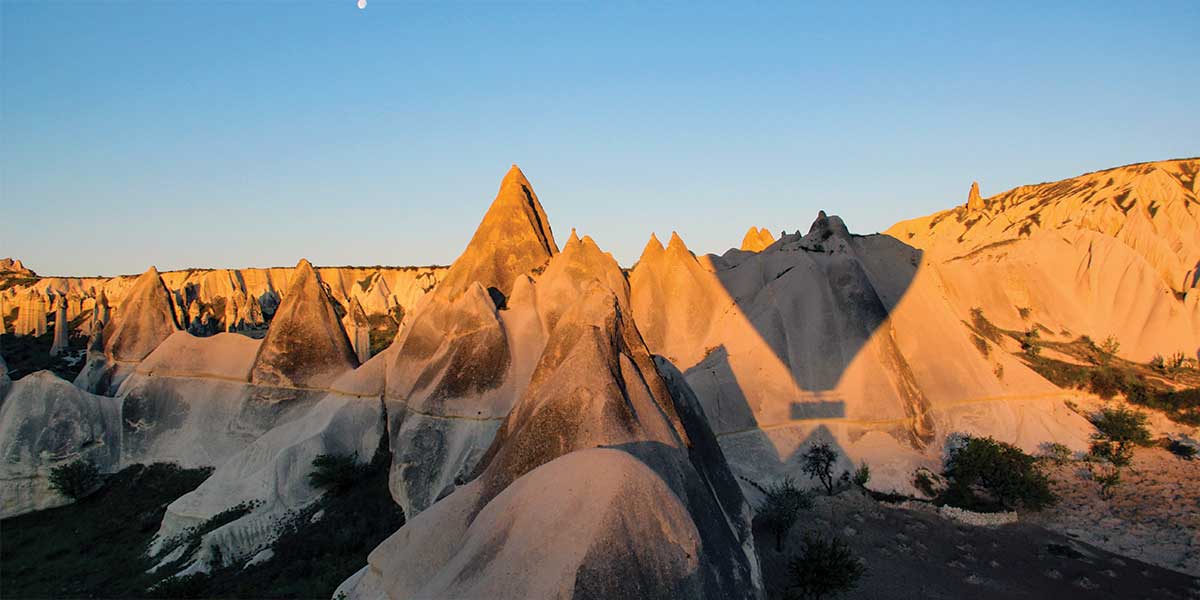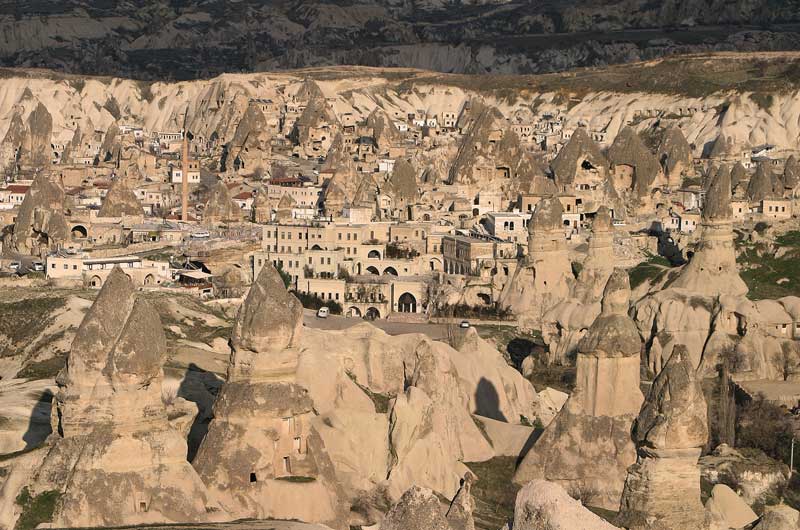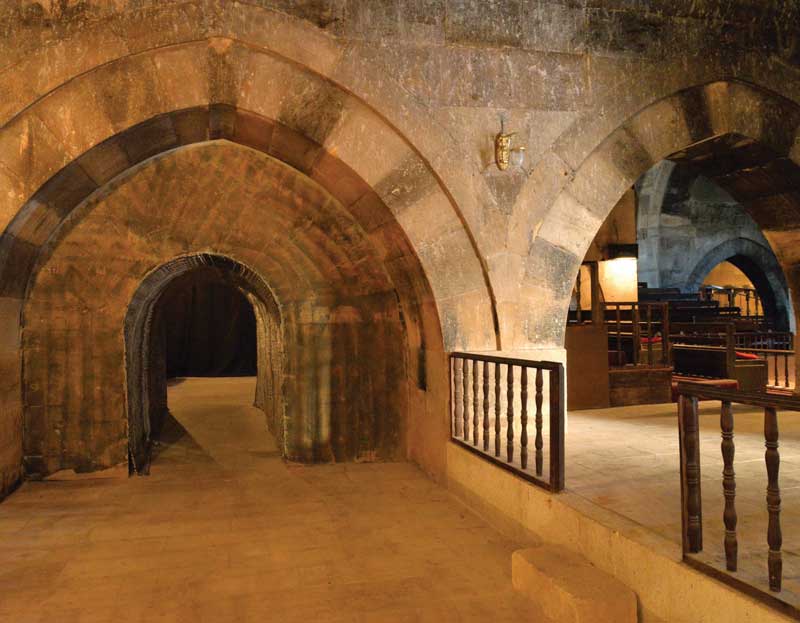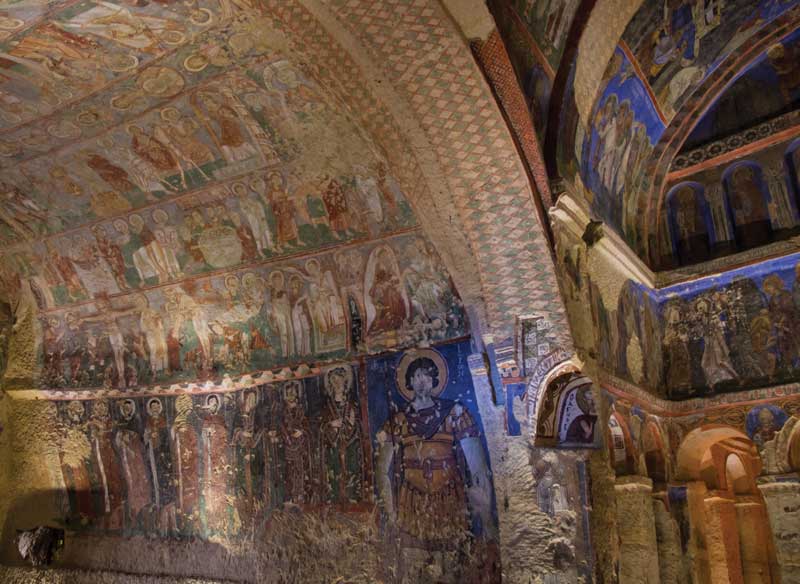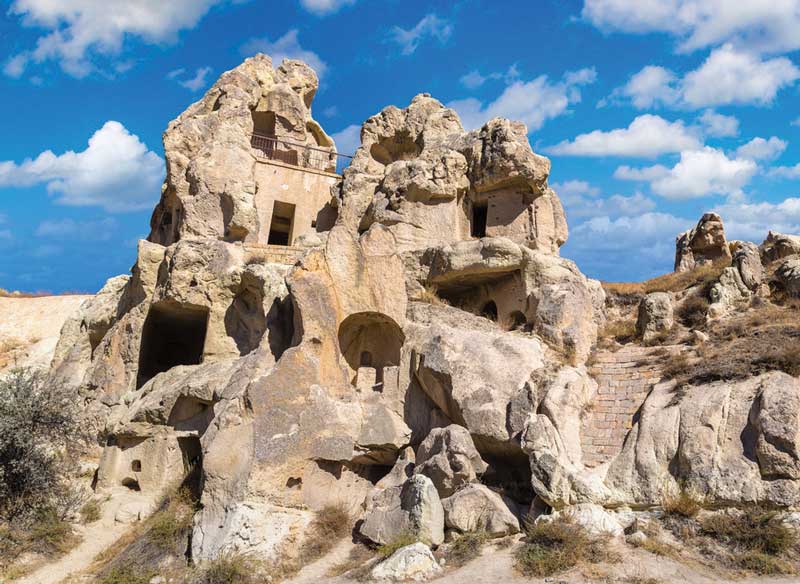Nearly 40 million years ago, the ancient volcanoes of Central Turkey, Hasan Dagi and Erciyes Dagi, erupted unimaginable quantities of lava, being responsible for the strange formations in Cappadocia.
Cappadocia, matrix of historical dalliances, imperial booms and busts.
Nearly 40 million years ago, the ancient volcanoes of Central Turkey, Hasan Dagi and Erciyes Dagi, erupted unimaginable quantities of lava, being responsible for the strange formations in Cappadocia.
As a result of meticulous natural work, it was its geographical location which played a fundamental role in making it, for centuries, the object of continuous invasions, the scene of crossroads and multiple trade routes.
In Cappadocia there were different human settlements. Some civilizations flourished here, while others came from Europe and other regions of Asia Minor.
The Byzantine Empire (330-1543) dominated the territories of a large part of North Africa and the Near East. From the 4th century it was established in Cappadocia, introducing Christianity, an architecture influenced by monasteries in Palestine and Egypt, and the affirmation of new Roman, Greek, Orthodox and Oriental culture.
Archaeological records from the 6th century B. C. indicate that Cappadocia was divided intro provinces, each ruled by a Persian satrap and worshipping Iranian deities such as Anahita in Zoroastrian (fire temples). The Greek geographer and historian Strabo described these places as having altars on which were large quantities of ashes, always burning.
Its ancient capital, Caesarea (now Kayseri), became, from the 3rd century onwards, an important religious center of Christianity: a monastic movement promoted by Bishop Basil the Great; preceded by Paul of Tarsus who, between 44-58 A.D., traveled three times to Lystra, Derbe, Iconium and Pisida in the company of Timothy.
Unfortunately, the apogee of monasticism came during the iconoclastic era (725-842 A.D.), following the prohibition of the Byzantine emperor Leo III. During this period, religious buildings were characterized by austerity of decoration, based on abstract and geometric symbols (the cross being a recurring element), use of few colors and mostly linear surfaces.
In 842 the restitution of the images and an explosion of colors in the iconography, already based on episodes and characters from the Bible, took place. It was during the 11 centuries o existence of the Byzantine Empire that some of the best world heritages were built.
For example, the Karanlink Monastery of Goreme, built around 905-1000 and used by Byzantine to make visible its civilizing as well as spiritual legacy. It is also known as the Dark Church because it has only one window communicating with the outside, which does not allow full sunlight to enter.
It has Roman influences in its architecture and decoration. Excavated on the rock, its interiors house paintings that portray some biblical events, such as: Anastasis or Descent into Limbo; Crucifixion of Jesus; Last Supper (with a theme within the Byzantine canons in which a giant fish is included instead of bread); and the Adoration of the Magi (showing six and not three).
Located in the Goreme Open Air Museum, the Church of the Buckle has Eastern Byzantine features. At the entrance, an inscription reveals that it was built by Constantine VII and Leo in the 10th century.
Here are also the churches: Karikli Kilise, Yilanli Kilise, Elmali Kilise, Azis Basil Sapeli, and Azize Barbara Sapeli.
In 1071 (11th century), Cappadocia was occupied by the Seljuk Turks who did not interfere in Christians' religion or life. An example of period architecture is the Peristrema Monastery (Ihlara Valley), with rock-hewn churches decorated with evangelical themes, and the Sarihan caravanserai.
Mustafapasa is a little-known tourist village. It is located 5 km from Ügrüp, near the town of Goreme. In its surroundings are located the ancient churches of Aios Vasilos, St. Constantine and Elena, and Alakara, whose 19th century architecture was influenced by the Greek heritage.
Over time, most of the monasteries in Cappadocia disappeared and ended up as architectural gems transformed by the locals into stables, dwellings, dovecotes or warehouses.
Text: ± Photo: vertierra, gmrt, DAY TRIP,TUEKISH ARCHAELOCGICAL

